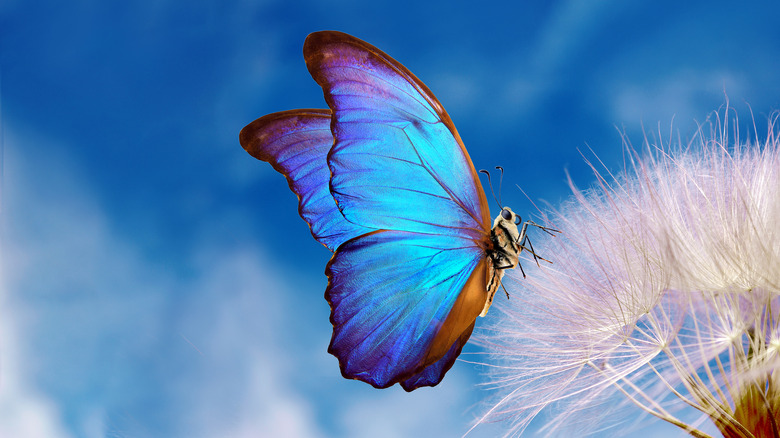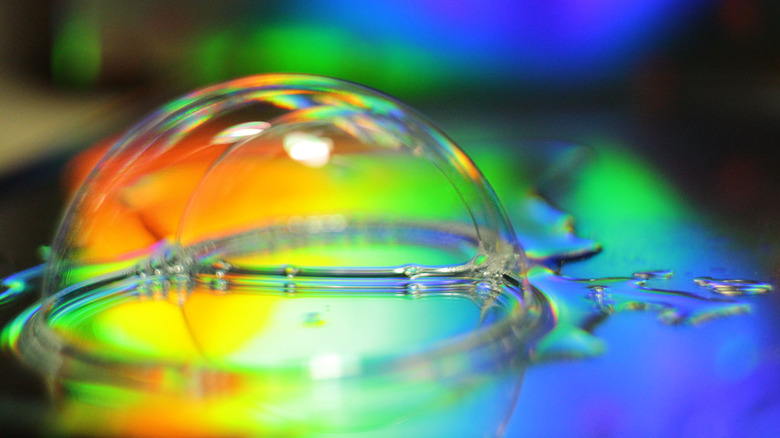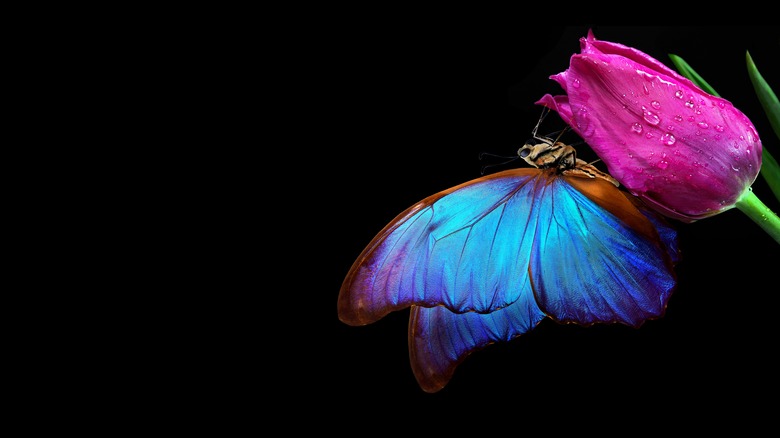Why You Hardly See Blue In Nature
A large part of what makes nature so beautiful is the wide variety of vivid color schemes. Plants and animals alike boast stunning shades of the rainbow and beyond, treating human eyes to enchanting scenes. One doesn't need to venture far to find these wonders, as flowers, birds, and insects often don bright reds, yellows, and greens. However, one color less common in nature than the rest is blue.
As lovely as the many shades of blue are, it isn't the easiest pigment to spot in nature compared to some of the others on the color wheel. According to The University of Adelaide, blue flowers grow on fewer than 10% of plants. The reason behind the elusive blue is that there aren't actually any naturally occurring blue pigments in nature. Because of this, nature has had to get creative with how it paints wildlife with this color, and the different ways blue occurs are impressive.
Blue is the shortest color wavelength
Light is responsible for almost everything humans see with the naked eye, including colors. Light is one part of what makes up the electromagnetic spectrum. This spectrum includes much of what we can't see, like microwaves, radiowaves, and UV rays. However, it's also home to the visible light spectrum, which houses the colors we see in our daily lives. According to the Center for Science and Education, some color wavelengths are longer than others. For example, red wavelengths average about 620 to 720 nanometers, while blue wavelengths average 1/100,000th of an inch. This shorter wavelength is why we see naturally occurring blue less frequently than other colors like red.
The lack of blue hues doesn't stop plants from getting creative with their appearance, though. Naturally occurring color pigments are called anthocyanins. According to a 2017 article published in Food & Nutrition Research (posted at the National Library of Medicine), anthocyanins are "colored pigments as food, pharmaceutical ingredients, and the potential health benefits." Plants mix these naturally occurring anthocyanins to create a blue pigment visible to humans and other animals.
Plants and animals have gotten creative with achieving blue
While plants are masters of mixing pigments to create blue, animals often find their own way to achieve these vibrant tones. Animals flaunting the color blue do so by altering the wavelengths of visible light. The blue morpho butterfly (pictured above) has ridges on its wing scales that bend light so precisely that the only color left to reflect off its wings is blue (via The University of Adelaide). The only known animal to produce a completely natural blue pigment is the obrina olivewing butterfly.
Like other colors, plants and animals use it for a multitude of reasons. Whether it be to ward off predators, attract prey, or attract a mate, it's a color that comes in handy. Even humans may choose to wear the color blue for their own hubris; according to a study published by YouGov America, blue is the most popular color among 10 countries. A color so rare that it requires expert levels of innovation to achieve deserves the praise it gets. As with so many of nature's wonders, blue will continue to provide exceptional imagery.


